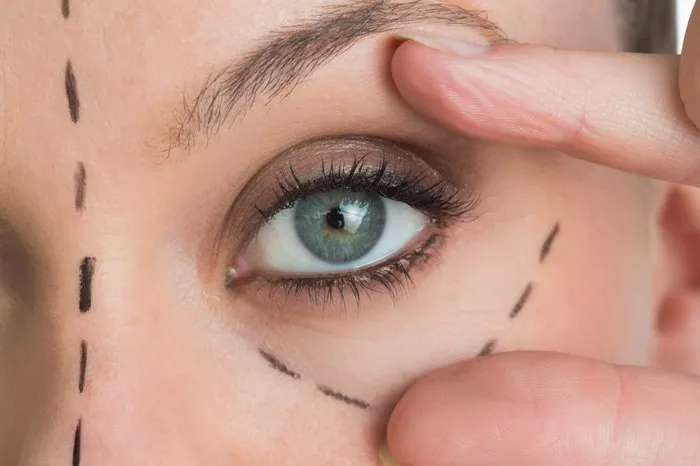Thin under eye skin is a common cosmetic concern that can make you look tired, older, and less vibrant. It can also make the veins and capillaries under the skin more visible, resulting in a bluish or purplish tint. Fortunately, there are several treatments available that can help thicken the skin under the eyes and restore a more youthful and refreshed appearance. In this article, we will explore the causes of thin under eye skin, the different treatment options available, and how to choose the best treatment for your needs.
Causes of Thin Under Eye Skin
Thin under eye skin is caused by a combination of factors, including age, genetics, lifestyle, and environmental factors. As we age, the skin around our eyes becomes thinner and less elastic, causing it to sag and become more prone to wrinkles and fine lines. Genetics can also play a role in the development of thin under eye skin, as some people are more predisposed to the condition than others. Lifestyle factors, such as lack of sleep, stress, and poor diet, can also contribute to the development of thin under eye skin. Environmental factors, such as exposure to UV rays and pollution, can also damage the skin around the eyes and accelerate the aging process.
Treatment Options for Thin Under Eye Skin
There are several treatment options available for thin under eye skin, ranging from non-invasive procedures to surgical interventions. Let’s take a closer look at each of these options.
Topical Treatments
Topical treatments, such as eye creams and serums, can be effective in thickening the skin under the eyes. These products contain ingredients that help to stimulate collagen production, such as retinol, vitamin C, and peptides. Some products also contain ingredients that help to hydrate and plump the skin, such as hyaluronic acid and glycerin. However, it is important to note that topical treatments are not a permanent solution, and the effects are typically temporary.
Injectable Fillers
Injectable fillers, such as hyaluronic acid and collagen, can be used to fill in the hollow areas under the eyes and thicken the skin. The procedure is quick and relatively painless, and the results can last for several months. However, it is important to note that injectable fillers are not a permanent solution, and repeated treatments may be necessary to maintain the results.
Laser Resurfacing
Laser resurfacing is a non-invasive procedure that uses lasers to stimulate collagen production and thicken the skin under the eyes. The procedure is relatively painless and requires no downtime. The results can last for several months to a year, depending on the individual. However, it is important to note that laser resurfacing is not a permanent solution, and repeated treatments may be necessary to maintain the results.
Chemical Peels
Chemical peels are a non-invasive procedure that involves applying a chemical solution to the skin to remove the top layer of damaged skin cells. The procedure can help to thicken the skin under the eyes by stimulating collagen production and improving skin texture and tone. The results can last for several months to a year, depending on the individual. However, it is important to note that chemical peels are not a permanent solution, and repeated treatments may be necessary to maintain the results.
Fat Transfer
Fat transfer, also known as fat grafting, is a surgical procedure that involves removing fat from one area of the body and injecting it into the under eye area to thicken the skin. The procedure is typically performed under local anesthesia and requires a few days of downtime. The results can be long-lasting, but it is important to note that the procedure is invasive and carries some risks.
Choosing the Best Treatment for Your Needs
Choosing the best treatment for your needs will depend on several factors, including the severity of your thin under eye skin, your age, your overall health, and your budget. It is important to consult with a qualified cosmetic surgeon or dermatologist to determine the best treatment plan for your individual needs.
If your thin under eye skin is mild to moderate, non-invasive treatments such as topical treatments, injectable fillers, laser resurfacing, or chemical peels may be effective in thickening the skin. These treatments are typically less expensive and require less downtime than surgical interventions.
If your thin under eye skin is severe, or if you have significant hollowing or sagging around the eyes, fat transfer may be the best option. While it is a more invasive procedure, it can provide long-lasting results and improve the overall appearance of the eyes and face.
Conclusion
Thin under eye skin can be a frustrating cosmetic concern, but there are several treatment options available that can help thicken the skin under the eyes and restore a more youthful and refreshed appearance. From non-invasive treatments such as topical treatments and injectable fillers to surgical interventions such as fat transfer, there are options available to suit a range of needs and budgets. If you are considering treatment for thin under eye skin, it is important to consult with a qualified cosmetic surgeon or dermatologist to determine the best treatment plan for your individual needs.


